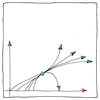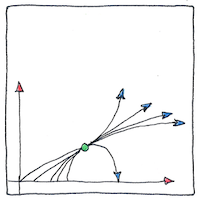Georges
Lemaître, Edwin
Hubble
astronomy

|
Expanding universe
Two years earlier, Georges Lemaître derived from Einstein’s equations for general relativity the relation between the distance and velocity of nebulae, and proposed that the farther away from us they were the faster they were moving away. Further, he claimed that the ratio of their distance to speed is constant and that the universe is expanding. Without knowing of Lemaître’s work, Edwin Hubble studied the red-shifts of distant galaxies and estimated their distances amazed to find the more distant they were the faster they were moving away implying that the universe is expanding.
Data
Hubble got the data. Vesto Melvin Slipher had discovered galactic redshifts, and his measurements were available to Hubbard. Hubble worked at the Mount Wilson Observatory, the largest reflecting telescope at the time, and had the assistance of Milton Humason who was able to photograph and obtain difficult spectrograms of faint galaxies. Lemaître and other astronomers— Vesto Slipher, James Edward Keeler, and William Campbell— understood how the universe is expanding, but Hubble got the data.
Hubble got the credit
What happened right here in River City? (Trouble with a capital ‘T.’) What can you blow with chewing gum? (Bubbles.) What’s left after demolishing a building? (Rubble.) What does a man shave every morning? (Stubble.) Who discovered galactic redshifts? (No, not Hubble; it was Vesto Melvin Slipher.)



The ratio of the velocity to the distance of objects in the universe is called Hubble’s constant, the rate of the expansion of the universe. The observation that more distant galaxies are receding more rapidly is called Hubble’s law. Georges Lemaître published these assertions in 1927 in Belgium and his paper did not get attention elsewhere. Lemaître also proposed the theory of the big bang, that all current vectors can be traced back to a single point and time, to the state of singularity.
See also in The book of science:
Readings in wikipedia: